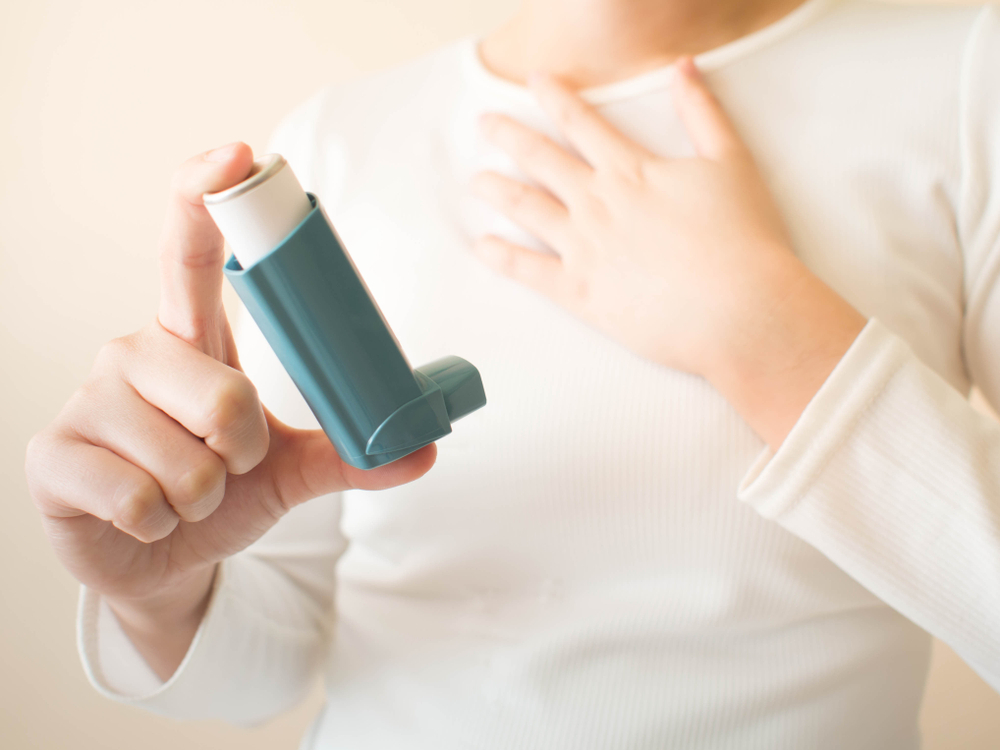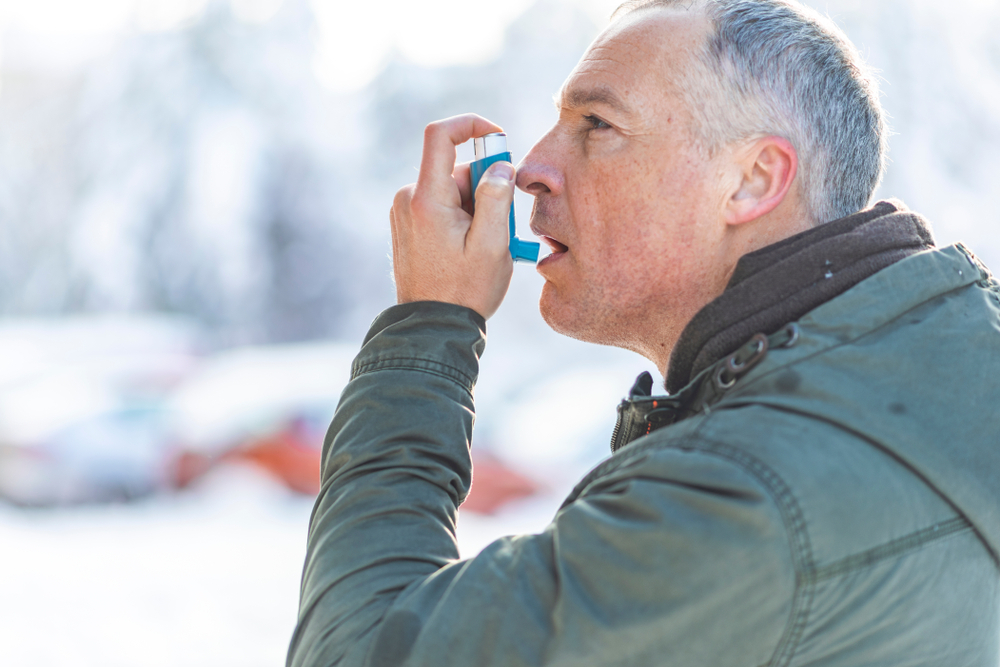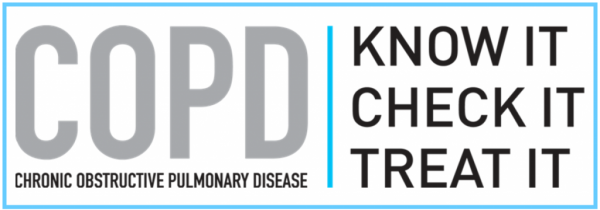Asthma & COPD
- Home
- Asthma & COPD
Scroll down to information about COPD
Asthma is a common long-term condition that can cause coughing, wheezing, chest tightness and breathlessness.
The severity of these symptoms varies from person to person. Asthma can be controlled well in most people most of the time, although some people may have more persistent problems.
Occasionally, asthma symptoms can get gradually or suddenly worse. This is known as an “asthma attack”, although doctors sometimes use the term “exacerbation”.
Severe attacks may require hospital treatment and can be life threatening, although this is unusual.
Speak to your GP if you think you or your child may have asthma. You should also talk to your doctor or asthma nurse if you have been diagnosed with asthma and you are finding it difficult to control your symptoms..

What causes asthma?
Asthma is caused by inflammation of the small tubes, called bronchi, which carry air in and out of the lungs. If you have asthma, the bronchi will be inflamed and more sensitive than normal.
When you come into contact with something that irritates your lungs – known as a trigger – your airways become narrow, the muscles around them tighten, and there is an increase in the production of sticky mucus (phlegm).
Common asthma triggers include:
- house dust mites
- animal fur
- pollen
- cigarette smoke
- exercise
- viral infections
Asthma may also be triggered by substances (allergens or chemicals) inhaled while at work. Speak to your GP if you think your symptoms are worse at work and get better on holiday. The reason why some people develop asthma is not fully understood, although it is known that you are more likely to develop it if you have a family history of the condition.
Asthma can develop at any age, including in young children and elderly people.
Read more about the causes of asthma.
Who Is Affected?
In the UK, around 5.4 million people are currently receiving treatment for asthma.
That’s the equivalent of 1 in every 12 adults and 1 in every 11 children. Asthma in adults is more common in women than men.
Symptoms
The symptoms of asthma can range from mild to severe. Most people will only experience occasional symptoms, although a few people will have problems most of the time.
The main symptoms of asthma are:
- wheezing (a whistling sound when you breathe)
- shortness of breath
- a tight chest – which may feel like a band is tightening around it
- coughing
These symptoms are often worse at night and early in the morning, particularly if the condition is not well controlled. They may also develop or become worse in response to a certain trigger, such as exercise or exposure to an allergen.
Read our page on the causes of asthma for more information about potential triggers.
Speak to your GP if you think you or your child may have asthma. You should also talk to your doctor or asthma nurse if you have been diagnosed with asthma and you are finding it difficult to control the symptoms.
Asthma attacks
When asthma symptoms get significantly worse, it is known as an asthma attack or “acute asthma exacerbation”.
Asthma attacks often develop slowly, sometimes taking a couple of days or more to become serious, although some people with asthma are prone to sudden, unexpected severe attacks. It is important to recognise attacks early and take appropriate action.
During an asthma attack, the symptoms described above may get worse and – if you’re already on treatment – your inhaler medication may not work as well as it normally does.
You might be monitoring your asthma using a device called a peak flow meter, and there may be a drop in your peak expiratory flow. Read about diagnosing asthma for more information.
If you think you or your child are having an asthma attack, don’t ignore it. Contact your GP or asthma clinic as soon as possible, or consult and use your asthma action plan if you have one.
Signs of a particularly severe asthma attack can include:
- your reliever inhaler (which is usually blue) is not helping symptoms as much as usual, or at all
- wheezing, coughing and chest tightness becoming severe and constant
- being too breathless to eat, speak or sleep
- breathing faster
- a rapid heartbeat
- feeling drowsy, exhausted or dizzy
- your lips or fingers turning blue (cyanosis)
Call 999 to seek immediate help if you or someone else has symptoms of a severe asthma attack.
Who is at risk?
Although the cause of asthma is unknown, a number of things that can increase your chances of developing the condition have been identified. These include:
- a family history of asthma or other related allergic conditions (known as atopic conditions) such as eczema, food allergy or hay fever
- having another atopic condition
- being born prematurely, especially if you needed a ventilator to support your breathing after birth
Signs of a particularly severe asthma attack can include:
- childhood exposure to tobacco smoke, particularly if your mother also smoked during pregnancy
- being born prematurely, especially if you needed a ventilator to support your breathing after birth
- having bronchiolitis (a common childhood lung infection) as a child
Some people may also be at risk of developing asthma through their job.
Asthma Triggers
In people with asthma, the small tubes (bronchi) that carry air in and out of the lungs become inflamed and more sensitive than normal.
This means that when you come into contact with something that irritates your lungs (a trigger), your airways become narrow, the muscles around them tighten, and there is an increase in the production of sticky mucus (phlegm).
Asthma symptoms can have a range of triggers, such as:
- respiratory tract infections – particularly infections affecting the upper airways, such as colds and the flu
- allergens – including pollen, dust mites, animal fur or feathers
- airborne irritants – including cigarette smoke, chemical fumes and atmospheric pollution
- medicines – particularly the class of painkillers called non-steroidal anti-inflammatory drugs (NSAIDs), which includes aspirin and ibuprofen, and beta-blockers sometimes given for high blood pressure or some types of heart disease
- emotions – including stress or laughing
- foods containing sulphites – naturally occurring substances found in some food and drinks, such as concentrated fruit juice, jam, prawns and many processed or pre-cooked meals
- weather conditions – including a sudden change in temperature, cold air, windy days, thunderstorms, poor air quality and hot, humid days
- indoor conditions – including mould or damp, house dust mites and chemicals in carpets and flooring materials
- exercise
- food allergies – including allergies to nuts or other food items
Once you know your asthma triggers, you may be able to help control your condition by trying to avoid them.
Occupational asthma
In some cases, asthma is associated with substances you may be exposed to at work. This is known as “occupational asthma”.
Some of the most commonly reported causes of occupational asthma include exposure to:
- isocyanates (chemicals often found in spray paint)
- flour and grain dust
- colophony (a substance often found in solder fumes)
- latex
- animals
- wood dust
You may be at an increased risk of developing occupational asthma if you are regularly exposed to substances such as these through your work.
Occupations that are commonly associated with the condition include paint sprayers, bakers and pastry makers, nurses, chemical workers, animal handlers, welders, food processing workers and timber workers
Treatment
Asthma medicines are usually given by inhalers – devices that deliver medication directly into the lungs as you breathe in.
Inhalers
Asthma medicines are usually given by inhalers – devices that deliver medication directly into the lungs as you breathe in.
This is an effective way of taking an asthma medicine as most goes straight to the lungs, with very little ending up elsewhere in the body.
Each inhaler works in a slightly different way. You should have training from your GP or nurse in how to use your device or how to help your child use theirs. This should be checked at least once a year.
Some inhalers are pressurised canisters – similar to a spray deodorant or an air freshener. You press the inhaler while breathing in, so the vapour containing the medication can pass into your lungs.
Some inhalers are not pressurised canisters but contain the medication in dry powder form, usually in a capsule that is punctured when the inhaler is “primed”. It is not possible to use a spacer with these inhalers and, unlike pressurised canisters, the powder must be inhaled quickly and forcefully if the medication is to reach the lungs.
Inhaler Technique
Why is inhaler technique important?
- It allows the correct dose of medication to reach your lungs
- It gives for you better control of your condition
- It could mean you need to use or be prescribed fewer medicine

- Stand or sit upright when using your inhaler
- Hold the inhaler upright with the mouthpiece facing down; take care not to block the air vent.
- Open the mouthpiece cover by folding it down until you hear a loud click
- Breathe out gently as far as is comfortable away from mouthpiece do not breathe in again yet.
- Place the mouthpiece between your teeth without biting and form a good seal around it with your lips.
- Breathe in through your mouth as deeply and fast as you can
- Hold breath for about 10 seconds or as long as is comfortable
- Remove the inhaler from your mouth
- Breathe out gently and slowly away from mouthpiece
- If you need to take a second dose repeat steps 4 to 9
- Close the mouthpiece.
1. Not standing, sitting or holding the inhaler upright
2. Blocking the air vent
3. Not inhaling strongly enough to draw the medication out of the Spiromax and in to your lungs
4. Breathing out through the inhaler, remove the inhale from your mouth first
5. Not holding your breath long enough after breathing in the contents.
1. Always hold the Spiromax horizontally, take care not to block the air vent
2. You may notice a taste when you inhale the medicine
3. Always close the mouthpiece after use
4. Do not open and close the mouthpiece unless you are going to use the inhaler as this will move the counter without you taking a dose.
5. Never wash the inhaler with water. To clean your inhaler, wipe the mouthpiece inside and outside with a clean, dry, lint-free cloth to remove any power residue. Keep your inhaler dry.
6. When the numbers become red in the window, you should consult your nurse or doctor and obtain a new inhaler.
7. Rinse your mouth out with water and brush your teeth after using your inhaler to reduce the amount of steroid that is deposited in your mouth
8. Speak to your nurse or pharmacist if you experience problems with opening or using your inhaler.
9. Always read the patient leaflet provided with your inhaler for any specific instructions
Outlook
For many people, asthma is a long-term condition – particularly if it first develops in adulthood.
Asthma symptoms are usually controllable and reversible with treatment, although some people with long-lasting asthma may develop permanent narrowing of their airways and more persistent problems.
For children diagnosed with asthma, the condition may disappear or improve during the teenage years, although it can return later in life. Moderate or severe childhood asthma is more likely to persist or return later on.

Chronic Obstructive Pulmonary Disease(COPD)
Chronic obstructive pulmonary disease (COPD) is the name for a collection of lung diseases including chronic bronchitis, emphysema and chronic obstructive airways disease.
People with COPD have difficulties breathing, primarily due to the narrowing of their airways, this is called airflow obstruction.
Why does COPD happen?
The main cause of COPD is smoking. The likelihood of developing COPD increases the more you smoke and the longer you’ve been smoking. This is because smoking irritates and inflames the lungs, which results in scarring.
Over many years, the inflammation leads to permanent changes in the lung. The walls of the airways thicken and more mucus is produced. Damage to the delicate walls of the air sacs in the lungs causes emphysema and the lungs lose their normal elasticity. The smaller airways also become scarred and narrowed. These changes cause the symptoms of breathlessness, cough and phlegm associated with COPD.
Some cases of COPD are caused by fumes, dust, air pollution and genetic disorders, but these are rarer.
Who is affected?
COPD is one of the most common respiratory diseases in the UK. It usually only starts to affect people over the age of 35, although most people are not diagnosed until they are in their 50s.
It is thought there are more than 3 million people living with the disease in the UK, of which only about 900,000 have been diagnosed. This is because many people who develop symptoms of COPD do not get medical help because they often dismiss their symptoms as a ‘smoker’s cough’.
COPD affects more men than women, although rates in women are increasing.
Symptoms
Symptoms of chronic obstructive pulmonary disease (COPD) usually develop over a number of years, so you may not be aware you have the condition.
COPD does not usually become noticeable until after the age of 35 and most people diagnosed with the condition are over 50 years old.
See your GP if you have the following symptoms:
- increasing breathlessness when exercising or moving around
- a persistent cough with phlegm that never seems to go away
- frequent chest infections, particularly in winter
- wheezing
Diagnosis
It is important that COPD is diagnosed as early as possible so treatment can be used to try to slow down the deterioration of your lungs. You should see your GP if you have any of the symptoms mentioned above.
COPD is usually diagnosed after a consultation with your doctor, which may be followed by breathing tests.
Treating COPD
Although the damage that has already occurred to your lungs cannot be reversed, you can slow down the progression of the disease. Stopping smoking is particularly effective at doing this.
Treatments for COPD usually involve relieving the symptoms with medication, for example by using an inhaler to make breathing easier. Pulmonary rehabilitation may also help increase the amount of exercise you are capable of doing.
Surgery is only an option for a small number of people with COPD.
Living with COPD
COPD can affect your life in many ways, but help is available to reduce its impact.
Simple steps such as living in a healthy way, being as active as possible, learning breathing techniques, and taking your medication can help you to reduce the symptoms of COPD.
Financial support and advice about relationships and end of life care is also available for people with COPD.
Can COPD be prevented?
Although COPD causes about 25,000 deaths a year in the UK, severe COPD can usually be prevented by making changes to your lifestyle.
If you smoke, stopping is the single most effective way to reduce your risk of getting the condition.
Research has shown you are up to four times more likely to succeed in giving up smoking if you use NHS support along with stop-smoking medicines such as patches or gum. Ask your doctor about this, call the NHS Smoking Helpline on 0300 123 1044 or go to the NHS Smokefree website.
Also avoid exposure to tobacco smoke as much as possible.


